5 ways to Create an Affiliate Marketing Sales Funnel
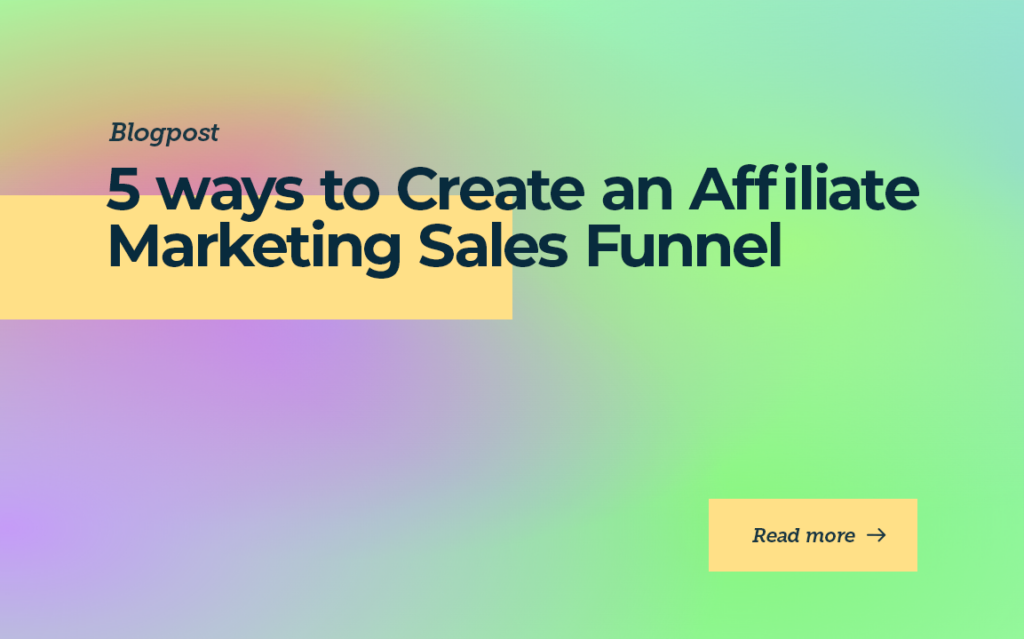
Author: Baidhurya Mani, Founder of SellCoursesOnline.com
Affiliate marketing remains popular among businesses seeking to generate more revenues. 81% of firms use affiliate marketing to promote and sell their products.
As such, many publishers have jumped on the affiliate marketing bandwagon. 94% of publishers join two affiliate programs to generate more income. More than 30% even participated in at least three of the
However, just like any other form of marketing, affiliate marketing requires intellect and purpose for any affiliate marketer. Here’s one essential component that you need to know about to increase conversion rates: a sales funnel for affiliate marketing.
This post will discuss how you can create an affiliate marketing sales funnel to generate more revenue.
What is an affiliate marketing sales funnel?
An affiliate marketing sales funnel is like a roadmap that helps guide potential customers through various steps, leading them to purchase or complete a desired action.
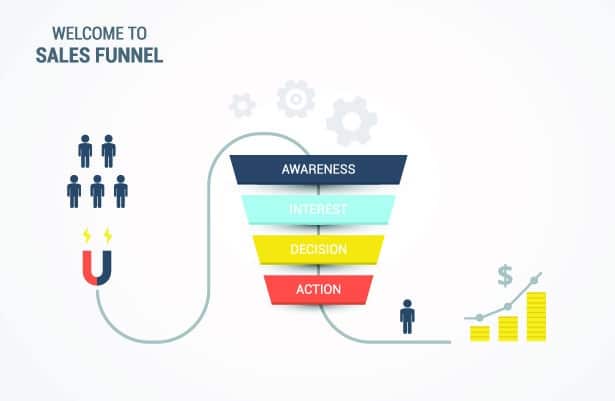
As shown in the above image, this funnel typically includes various stages such as awareness, interest, decision, and action to convert leads into customers. It has played a pivotal role in the success of digital entrepreneurs, mainly in the online education sector.
What does an affiliate marketing sales funnel do?
A well-defined sales funnel is essential for increasing the efficiency of your affiliate marketing approach. It simplifies the customer experience, making it easier to nurture leads and increase conversions. Guiding potential students throughout the journey can even exponentially increase online course enrollments.
Moreover, sales funnels help businesses build deeper client relationships by customizing marketing strategies by funnel position. Such a tailored approach could increase customer loyalty and sustain sustained business growth.
Finally, an affiliate marketing sales funnel allows firms to progress at each step of the process, identify areas for improvement, and tailor their marketing efforts appropriately.
How to create an affiliate marketing sales funnel
Understanding customer acquisition and conversion techniques is essential for developing an affiliate marketing sales funnel.
Let’s explore how to create a sales funnel for affiliate marketing success and discuss how the funnel can enhance visibility and conversions.
1. Craft relevant content for your funnel
Content is vital in an affiliate marketing sales funnel. It helps attract visibility and expand its reach among its target audience.
You’ll need to create a variety of content for your funnel. You could develop informative blog posts, engaging videos, and compelling products. Don’t just ensure this variety. Ensure this content is tailored to the target audience’s buyer journey, challenges, and desires. When crafting (and offering) content, consider the stage of the sales funnel your audience is at—awareness, consideration, and decision-making. Consider the stage of the sales funnel your audience is at—awareness, consideration, and decision-making–when crafting (and offering) content.
For the awareness stage, you can create and offer interesting and educational blog posts or social media posts to capture the audience’s interest. These can help you present your affiliate products or services, piquing customers’ curiosity.
Here’s a sample blog post for the awareness phase:
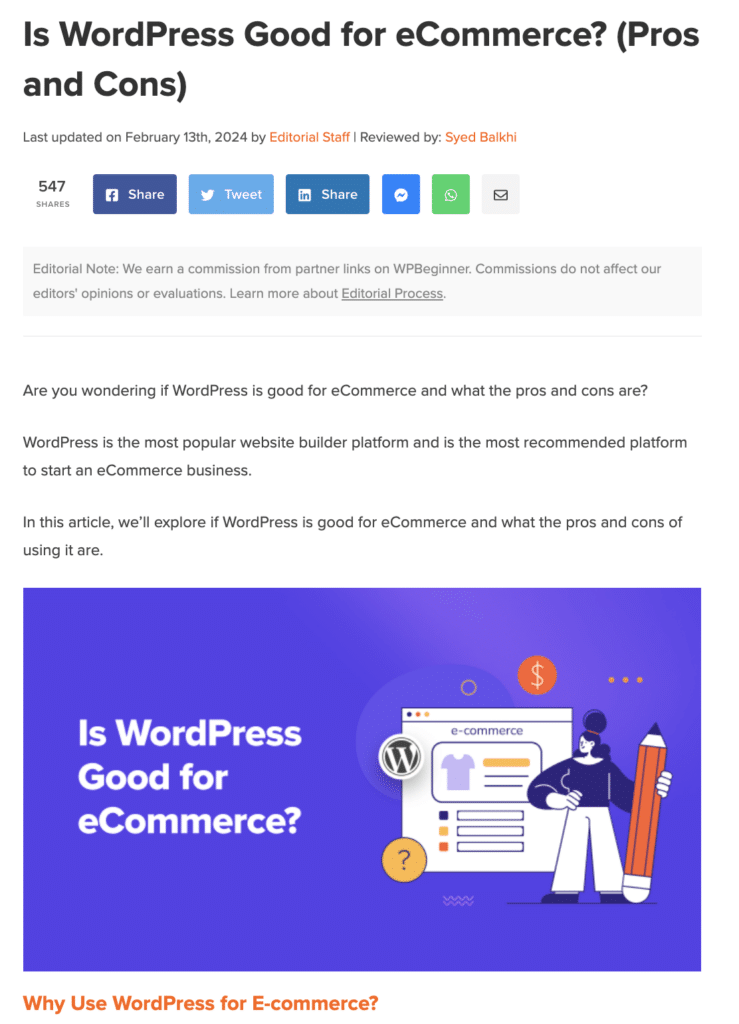
In the consideration stage, you could provide social proof such as case studies and testimonials. Comparison guides can also help. The goal is to help potential customers evaluate your affiliate products against competitors. Suppose you’re promoting an online course builder. A blog post about online course platforms can be great content for potential customers. It can address common objections and showcase the value of the product being promoted.
Finally, as your content for the last stage of the funnel, you could offer exclusive deals and discounts to incentivize readers to purchase. Take a look at these examples of affiliate marketing deals:
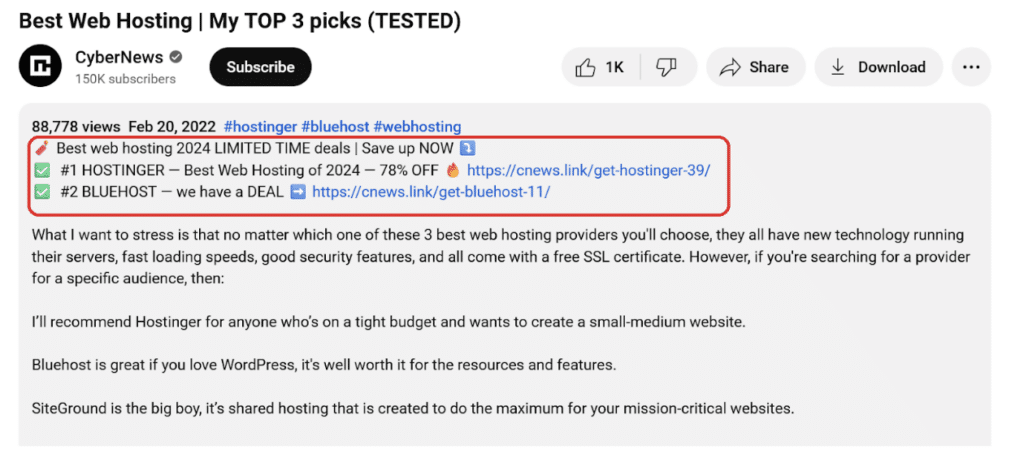
When you collaborate with businesses that offer affiliate programs, you can receive these incentives to promote to your potential customers. Moreover, affiliate networks and platforms often offer marketers various promotions via their channels.
2. Create a bridge page
A bridge page is a web page used in affiliate marketing to connect an advertisement or promotional content to a sales or product page. Its purpose is to prepare the visitor for the offer and increase the chances of conversion.
Bridge pages provide additional information, address common objections, and offer incentives to entice the visitor to take action. They are vital in affiliate marketing as they help bridge the gap between ad exposure and final sales. For example, if you want to attract students to the case of tapping students for your online course, you can design a compelling page that connects them to your course platform.
When creating a bridge page, you must keep the design and content simple and to the point. Avoid overwhelming the visitor with too much information or distracting elements. Communicating the product or service’s value proposition and providing a clear call to action is also essential.
Furthermore, testimonials and reviews about the product or service can reinforce the value proposition and persuade the visitor to convert. Here’s an excellent example of a bridge page. The publisher provides reviews and educational content first before directing visitors to the product page.
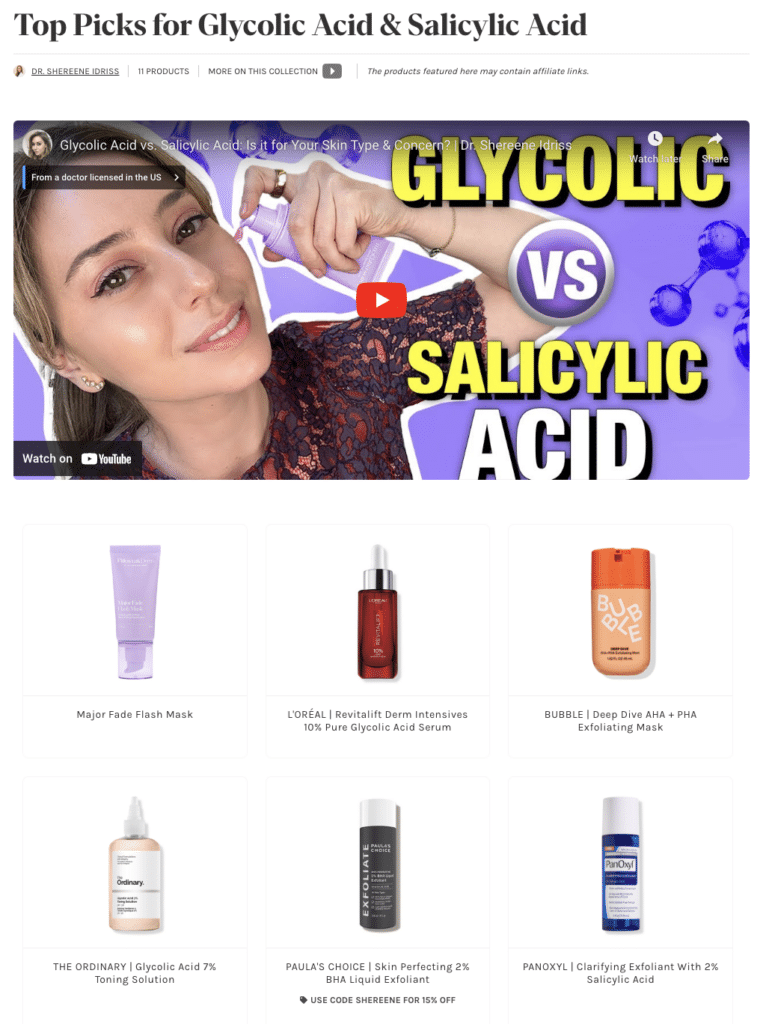
Finally, optimize the bridge page for mobile devices. Compress your images and enable browser caching to secure fast loading times. This will help improve the user experience and increase conversion rates.
3. Ensure opt-in and email automation
Opt-ins and email automation can help you nurture your potential buyers until they make a purchase.
Opt-in is obtaining permission from prospective buyers to send them marketing materials. For this, you typically need to offer a “freebie” that prompts users to share their email addresses. These freebies can be guides, e-books, or webinars.
You can incorporate your opt-in in your funnel content, just like Minimalist Baker does:
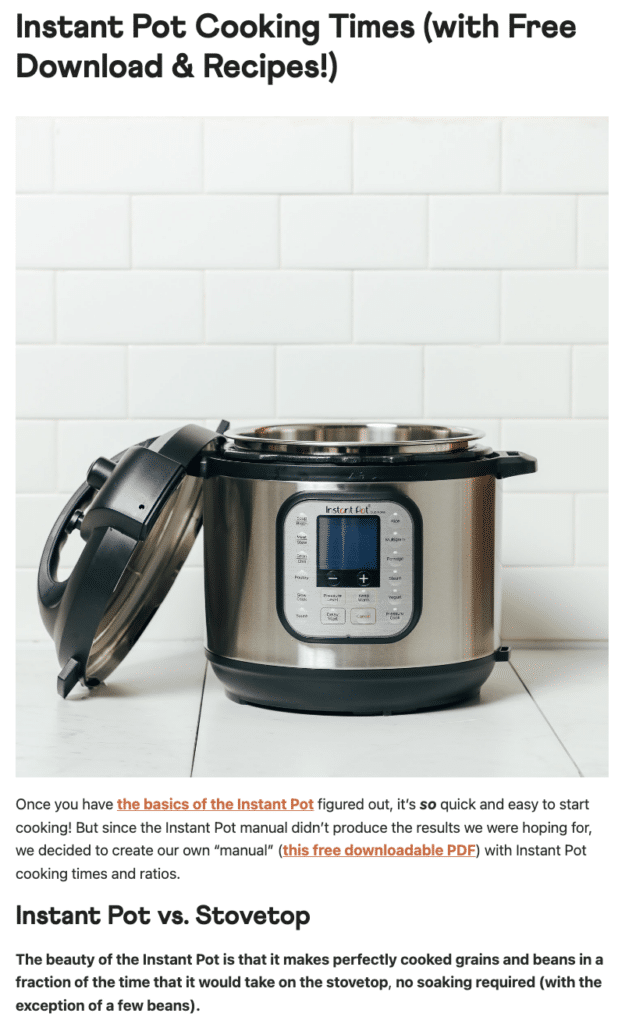
See how it seamlessly promotes its “free downloadable” guide on Instant Pot cooking times and ratios within the blog post… Readers will likely click on the link since these people are already interested in the product (that’s why they’re reading the blog post first).
Once they click on the link, you can send them to a landing page that showcases the value of the freebie and prompts them to subscribe. We’ll talk more about this and other ways you can promote your opt-in and opt-in landing pages later.
Now, let’s assume someone subscribes to your email list. This is where email automation comes in. Email automation involves setting up pre-written emails to be sent automatically based on certain triggers or actions the subscriber takes, like subscribing to your newsletter. With automation, when someone signs up to your mailing list, they automatically get a welcome email, like the one below:
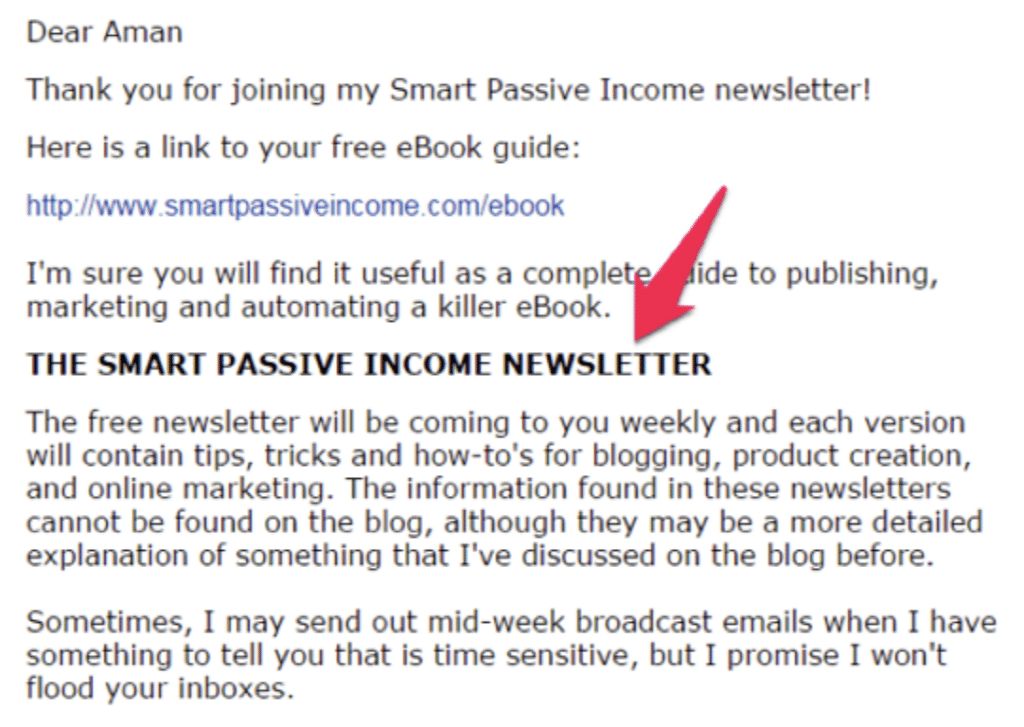
You can use email marketing platforms like GetResponse and Mailchimp to set up this email automation. You can use email marketing platforms like GetResponse and Mailchimp to set up this email automation. Apart from welcome emails, include in these automated sequences emails that provide valuable content, promote your affiliate products, and even nurture your leads by providing them with tailored information about your online course and even nurture your leads by providing them tailored information about your online course and provide them incentives accordingly.
As a final tip, when using these platforms, regularly analyze the performance of your email automation efforts. This way, you can make the necessary adjustments and improve conversion rates.
4. Create landing and thank you pages
Suppose you already have your opt-in and email automation in place. It’s time to create a landing page for your opt-in. This landing page aims to get your visitors to subscribe to your email newsletter.
Ensure a simple, clean design helps your call to action stand out. Create captivating headlines and subheadlines, too. Essentially, you want to highlight the value of what you’re offering in exchange for your visitor’s email addresses. For the students you are dealing with, the intention is to tap in for conversion and express gratitude for them fostering an impression on your online course platform.
Check out this excellent example of an opt-in landing page that does just that.
Notice that there’s an emphasis on the fact that the audit document is “free.” The main headline also highlights that the document ensures an audit lasting only ten minutes. Then there’s the supplementary text below that emphasizes the benefits of availing of the audit document: you can get more followers, increase engagement, and drive more traffic:
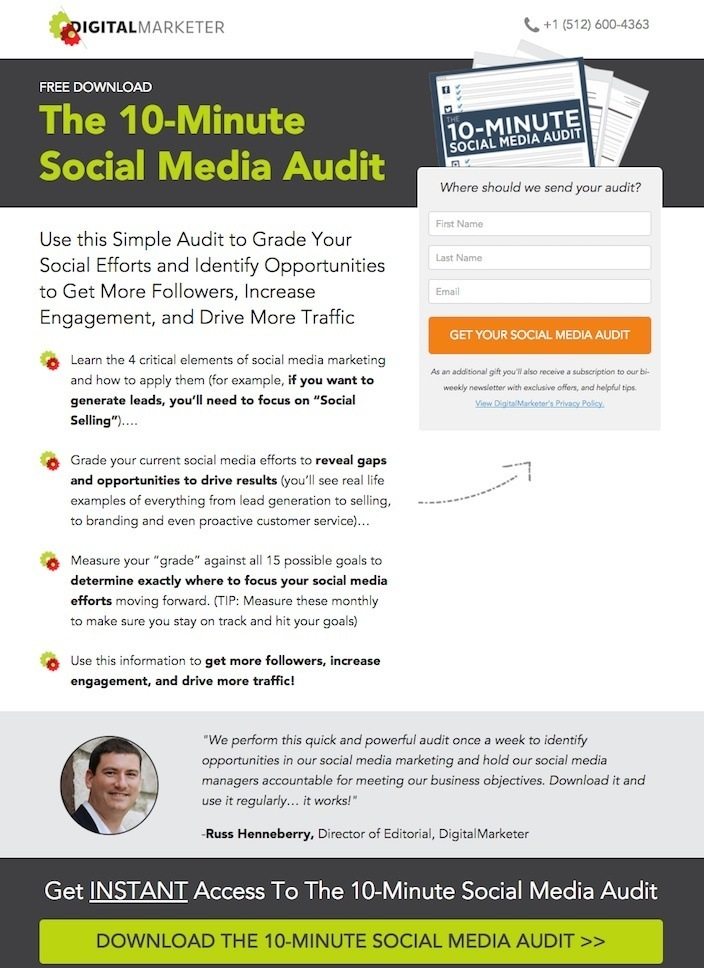
You can experiment with various components on your opt-in landing page, like headlines, images, and button colors, to determine which resonate with your audience. You can do this using an AI website builder or a platform like Wix, SquareSpace, or WordPress. Also, ensure your landing page is mobile-responsive and loads quickly for a smooth user experience on all devices.
Once a visitor has completed the desired action on your landing page, it’s crucial to redirect them to a thank-you page. Keep the design of your thank-you page consistent with your landing page to maintain a cohesive brand experience.
5. Drive traffic to the landing page
We already mentioned how you can incorporate your opt-in into your blog posts, like Minimalist Baker did, and then direct them to a landing page to get them to subscribe.
Another option is to drive traffic directly to your opt-in landing page. One way you can do this is through search engine optimization. SEO involves optimizing your landing page content to increase its visibility in search engine results pages. You can achieve this by using the right keywords, creating top-notch content, and building backlinks from reputable sites.
Social media marketing is another option. By using targeted ads like the one below, you can boost traffic to your opt-in page.

Another option is to create organic posts promoting your offer. Whatever strategy you use, whether organic social media marketing or paid advertising, highlight the benefits of availing of your sign-up “freebie” in your social media content. If you emphasize the benefits of online courses, you can create specific landing pages that lead to that and, in turn, maximize affiliate marketing effectiveness.
Paid advertising platforms like Google Ads can also help you reach potential email subscribers and direct them to your landing page.
Conclusion
Developing an effective affiliate marketing sales funnel requires a planned approach and attention to detail.
So, ensure you create varied and relevant content for your target demographic. Don’t forget to create a bridge page that may assist prospective clients in navigating the sales process more effectively.
Opt-in forms and email automation are critical for acquiring prospects and moving them along the funnel. Create landing pages for your opt-in and thank-you pages as well. As a final tip, drive traffic to your landing page via SEO and other techniques.
Adopting these five tactics allows you to build a successful affiliate marketing sales funnel that generates results. Best of luck!
